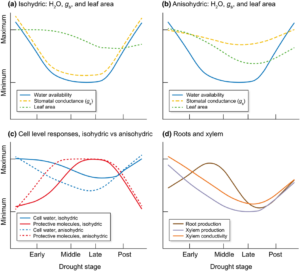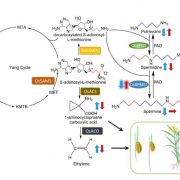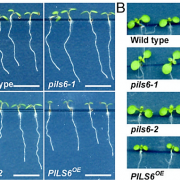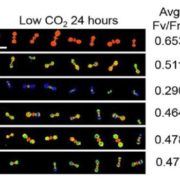Review: The genetics of drought tolerance in conifers
 Changing climates mean changing rainfall patterns, which can have serious consequences for long-lived plants such as conifers. Moran et al. provide a thoughtful and readable overview of the strategies that enable some conifer species to survive drought. They start by discussing the different definitions of “drought tolerance” and what they mean for different types of trees (specifically, isohydric, those that close their stomata to maintain a relatively constant hydration state, and anioshydric, those that experience a much greater change in hydration state). What’s particularly nice about this review is that it connects physiological studies of drought tolerance to genetic studies, which is now possible due to the increasing amount of data from conifers. A key recommendation is that researchers focus more on drought survival or growth after drought rather than water-use efficiency (including δ13C) as a measure of drought tolerance. Encouragingly, they conclude, “early attempts at predicting phenotypes from genotypes suggest that genetic tools may be able to aid managers to select appropriate planting stock in the near future, at least for the better studied species.” (Summary by Mary Williams) New Phytol. 10.1111/nph.14774
Changing climates mean changing rainfall patterns, which can have serious consequences for long-lived plants such as conifers. Moran et al. provide a thoughtful and readable overview of the strategies that enable some conifer species to survive drought. They start by discussing the different definitions of “drought tolerance” and what they mean for different types of trees (specifically, isohydric, those that close their stomata to maintain a relatively constant hydration state, and anioshydric, those that experience a much greater change in hydration state). What’s particularly nice about this review is that it connects physiological studies of drought tolerance to genetic studies, which is now possible due to the increasing amount of data from conifers. A key recommendation is that researchers focus more on drought survival or growth after drought rather than water-use efficiency (including δ13C) as a measure of drought tolerance. Encouragingly, they conclude, “early attempts at predicting phenotypes from genotypes suggest that genetic tools may be able to aid managers to select appropriate planting stock in the near future, at least for the better studied species.” (Summary by Mary Williams) New Phytol. 10.1111/nph.14774









